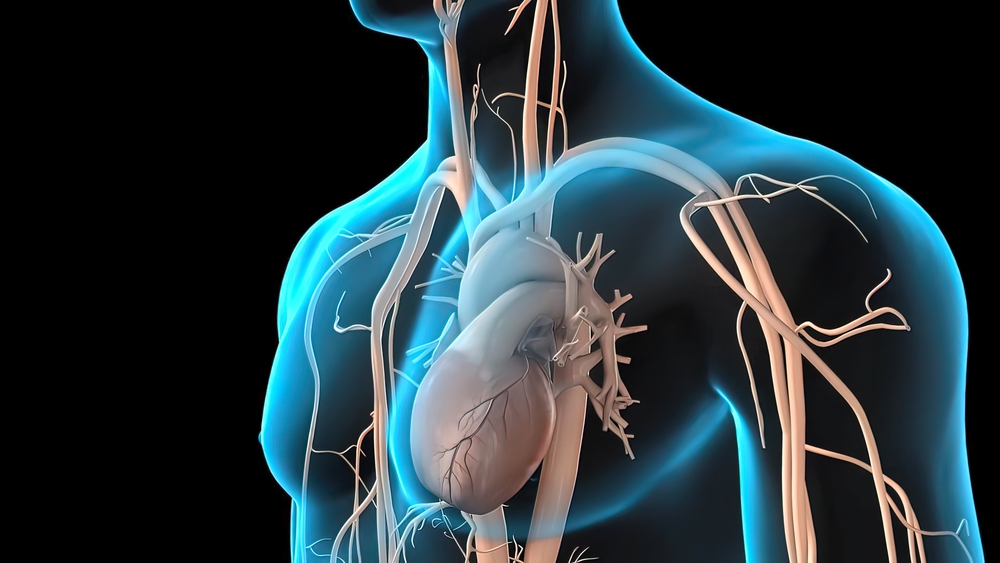
Is your body quietly flashing SOS signs about the health of your heart at this very moment? As it happens, blocked arteries tend to whisper rather than shout and hearing those whispers before they become shouts can save your life. Chest pain grabs all the attention, but the truth is that blockages in the arteries can manifest themselves in ways you would not think. For anyone who’s an advocate of wellness, being aware of the red flags and what to do about them can be the difference between life and death. Prepare yourself to learn the most illustrative symptoms of clogged arteries, along with the best expert-endorsed methods to keep your heart in the clear. Here’s what every wellness-conscious adult should know, today.

1. Chest Pain: The Classic Red Flag You Can’t Ignore
Chest pain, or angina, is the signature symptom of clogged arteries, but it’s not always the dramatic, movie-style clutching at your chest. According to Dr. Ajay Parikh, cardiologist with Advocate Health Care, angina often feels like a “squeezing pressure, tightness or heaviness” sometimes radiating to your left arm, jaw, or upper back. What’s crucial? If pain happens during exertion and eases with rest, it’s a warning sign. But if it strikes while you’re chilling out and doesn’t let up, it could signal a heart attack. As Healthline puts it, unstable angina that persists at rest is an emergency (unstable angina). Don’t tough it out get checked out immediately.

2. Shortness of Breath and Unexplained Fatigue
If suddenly you find yourself winded by tasks that once were effortless or you just feel tired for no apparent reason your heart may be finding it difficult to circulate enough blood. Dr. Stephen Kopecky of Mayo Clinic describes, “When your heart can’t pump enough blood to meet your body’s needs, you might develop shortness of breath or extreme fatigue during activities.” Occasionally, these signs creep up on us so slowly that we can dismiss them easily. But if your normal exercise makes you hyperventilate or you’re exhausted by daily chores, it’s time to visit your doctor.

3. Leg Pain, Cold Feet, and Slow-Healing Injuries
A clogged artery is not only a heart issue it can also play havoc with blood flow to the legs and feet. If you experience pain in your legs (especially after you’ve been walking), cold feet, or cuts and scrapes that heal very slowly, your peripheral arteries could be at fault. As The Hearty Soul explains, slow healing and constant coldness in your extremities can be an indication of clogged blood flow. Plaque in your lower extremities, as Healthline explains, can cause fatigue and cramping following activity. Don’t dismiss these symptoms they’re your body’s signal that there’s a circulation problem.

4. Palpitations of the Heart and Rapid Pulse
Ever have your heart flutter, thud, or miss a beat? Infrequent palpitations are generally benign, but when accompanied by other symptoms such as shortness of breath or chest pain, they can be an indication of plugged arteries. Advocate Health Care notes that experiencing a racing heart can indicate a blockage. If these feelings occur on a regular basis or become severe, particularly with other warning signs, it’s a good idea to consult a physician.

5. Vision Changes and Slurred Speech: Don’t Miss These Brainy Clues
Blindness that happens suddenly or mumbling words may be frightening and with good cause. If arteries to your brain (carotid arteries) are blocked, you may have these neurological symptoms. The Hearty Soul describes how blindness or difficulty speaking may indicate a blockage is reducing blood flow to your brain. Healthline states that carotid artery plaque can cause stroke-like symptoms. Not times to “wait and see” call for assistance right away.

6. The Power of Early Detection: Heart Scans and Non-Invasive Tests
Here’s the good news: you don’t need to wait for symptoms to get in control of your heart health. Emerging non-invasive tests, such as the HeartFlow Analysis and coronary artery calcium (CAC) scans, are game-changers for early detection. The HeartFlow Analysis, for instance, “constructs an individualized 3D model of the patient’s coronary arteries” and models blood flow to identify trouble before it is an emergency. And a CAC scan will uncover hidden calcium deposits early “the best method for those who are unsure if they have heart disease to make more informed choices about treatment and medication,” says Dr. Michael Blaha of Johns Hopkins. If you’ve risk factors or a family history, discuss whether these tests are appropriate for you with your doctor.

7. Lifestyle Changes That Actually Work: Diet, Exercise, and Stress Control
No list would be complete without practical prevention advice. The evidence is clear: healthy eating habits such as the DASH or Mediterranean diet high in vegetables, fruits, whole grains, and healthy fats can reduce LDL cholesterol and reduce plaque buildup. Regular exercise is a superpower too; try for 150 minutes or more a week of moderate exercise. And don’t neglect stress reduction ongoing stress can hurt arteries down the line. Even little steps, such as short daily walks or deep breathing, can contribute to enormous heart advantages.

8. Drugs and Novel Treatments: When Lifestyle Falls Short
Lifestyle changes sometimes require a little assistance. If your blood pressure or cholesterol is persistently high, or if you already have a lot of plaque, your physician may prescribe medications such as statins or even surgery like angioplasty or bypass. As the Mayo Clinic explains, “Treating coronary artery disease typically involves changing your lifestyle. If needed, treatment might include drugs such as aspirin, cholesterol-altering medications, beta-blockers, or other medical procedures like angioplasty or coronary artery bypass surgery.” The right combination can stabilize or even reduce plaque, and most importantly, enable you to live better, longer.

9. The Hidden Risk Factors: Family History, Diabetes, and More
Some risk factors for clogged arteries fly under the radar. Age, family history, diabetes, high blood pressure, and even certain autoimmune conditions can all raise your risk even if you feel healthy. As the Mayo Clinic reports, “If a close relative was diagnosed at an early age with heart disease, you’re at a greater risk.” Being aware of your individual risk profile gives you the power to take early action, from screening to lifestyle improvements. Don’t underestimate the value of knowledge in safeguarding your heart.
Reading the early warning signs of blocked arteries isn’t paranoia it’s empowerment. With a combination of knowledge, advanced screening technology, and intelligent lifestyle decisions, anyone can tip the odds in their favor. Keep in mind: the earlier you act, the better the choices. Continue to listen to your body, remain curious, and don’t be afraid to partner with your healthcare professional. Your heart will be grateful that you did.


